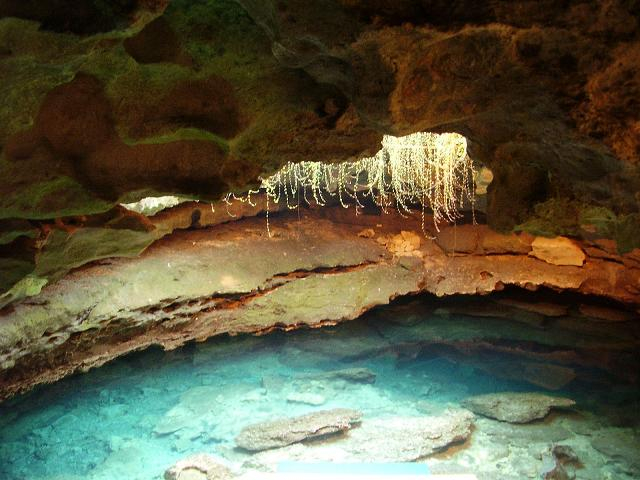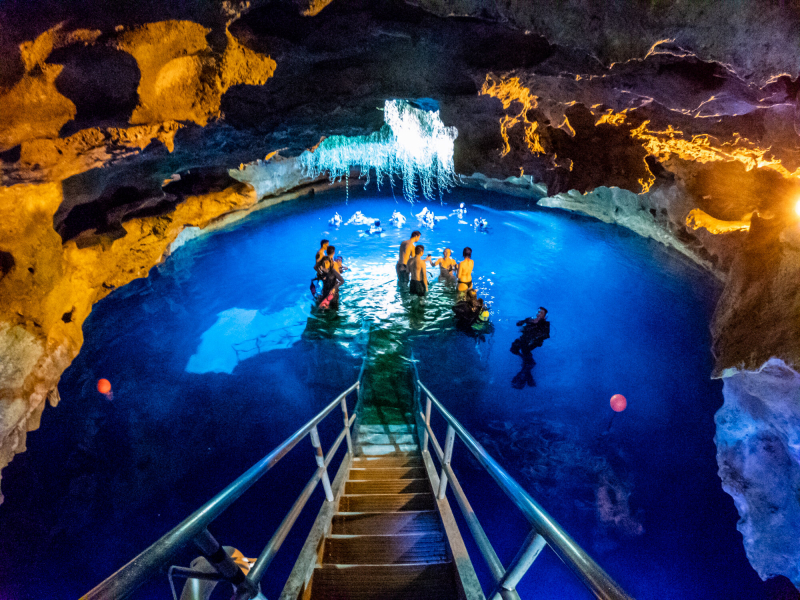Devil’s Cave
The Teufelshöhle, or Devil's Cave, is one of the Most Beautiful Caves in Germany, and is located in Pottenstein, approximately one hour north of Nuremberg. Faults and rainwater have created a 3-kilometer (1.9 miles) maze of delicate and vast dripstone caves over nearly three million years. The underground attraction attracts tourists today, but the unearthed skeletons of now-extinct cave bears demonstrate that the large mammals inhabited the caves 25,000 years ago.
The temperature of the water in the underground river is always 72 degrees Fahrenheit (22 degrees Celsius). In cold weather, water vapor rising from the river's surface forms a visible plume above the cave's entrance, which early settlers mistook for a chimney from Hell. Originally, the opening to the surface was a small solution sinkhole through which visitors had to squeeze to get to the water. To facilitate access, the opening was enlarged in the 1990s. The cave expands below water level to up to 200 feet (61 m) across (a shape described as an "inverted mushroom"). The cave's maximum depth is 54 feet/16.5 meters, and its surface diameter is 120 feet. The water table in the area has caused the cave's water level to fall. However, the water level has risen above the main stage/platform as of 2018. In the early 1990s, the cave was opened to the public as a dive site.
Four underwater passages extend from the pool under the opening, ranging in depth from 5 feet (1.5 m) to 90 feet (27 m). The passage known as chamber 3 was 70 feet (21 meters) underwater and contained animal and human remains as well as artifacts. Mastodons, ground sloths, camels, horses, dire wolves, bog lemmings, Florida spectacled bears, saber-toothed cats, and peccaries were among the extinct (Pleistocene) species found with the human remains and artifacts. The human remains date back to around 7,500 BC.
Location: Teufelshöhle, B470, Pottenstein, Germany












